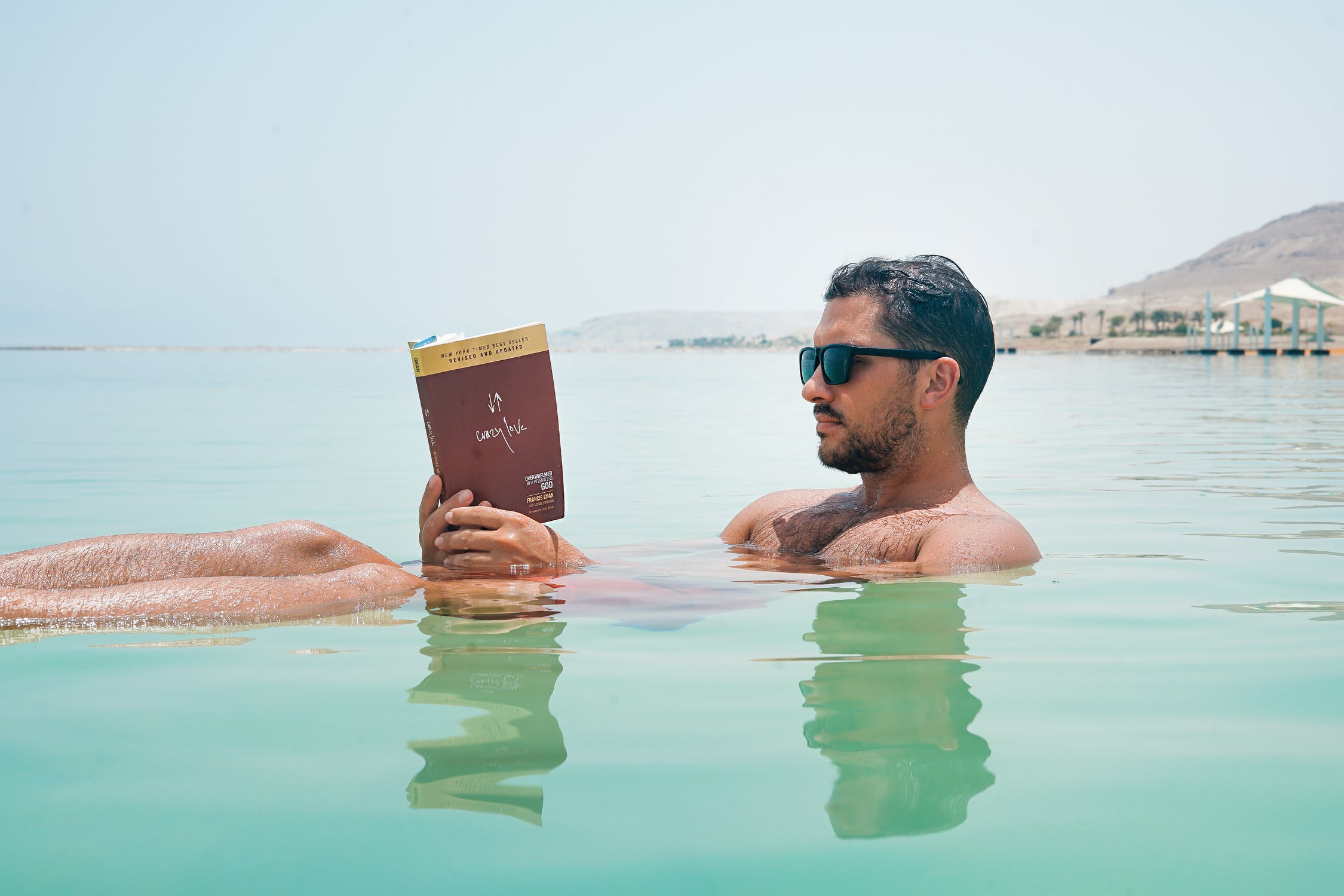
Along the way, the water will be desalinated to supply Jordan with fresh water, and the salt runoff will be directed to the Dead Sea for replenishment. In October 2009, the Jordanians announced accelerated plans to extract approximately 300 million cubic meters (11 billion cubic feet) of water annually from the Red Sea, desalinate it for use as fresh water, and send wastewater to the Dead Sea through a tunnel, despite concerns over inadequate water quality. time to assess the potential impact on the environment. Although the Dead Sea will never completely disappear (as evaporation slows down as surface area decreases and salinity increases), measures are now being proposed to pump water from the Red Sea through a series of tunnels or canals to replenish the rapidly dwindling water. and supply water and electricity to neighboring countries.
It is just 45 minutes from Amman, Jordan’s capital, and is surrounded by several major biblical and Islamic religious sites of pilgrimage. If you’re looking for a one-week itinerary in Jordan, check out my travel guide and my complete guide to Petra here. We drove to the Dead on the last few days of our weeklong Jordan itinerary.
Hot, sweaty, covered in dust and sand from the Wadi Rum Desert, we were ready for a few days of relaxation by the pool and by the sea. We approached the Dead Sea from the south, driving about 5 hours from Wadi Rum. Sunlight reflected on the salt-covered rocks that fringed the cobalt-blue water, but I knew there was no life under the water.
The Dead Sea, 423 meters below sea level, is officially the lowest place on earth, making it an even more interesting place to visit. The Dead Sea is a very salty lake in western Jordan, known for its healing properties, and it is slowly disappearing. In the Dead Sea, salt, water and landforms create a barren and evocative landscape on Jordan’s western border. We have all heard about this famous salt lake, its natural beauty and medicinal properties.
The Dead Sea is a fabulous vacation spot, and Jordan is the ideal destination for those who want to experience all the virtues of the lake in peace and quiet. Most of the water in the Dead Sea comes from the Jordan River, which makes the lake primarily a Jordanian natural wonder for the whole world. This level makes a number of other wonders of the Dead Sea possible: the sea water retains almost 34% salinity, and the Jordan River flows into the Dead Sea, while the river water evaporates and leaves extensive layers of salt and minerals.
According to the environmental organization EcoPeace Middle East, the water level drops by about 1 meter every year. Due to the anthropogenic reduction of the Jordan River (70-90% of the river’s water is used for human needs) and the high evaporation rate of the Dead Sea, the sea is shrinking. The Jordan River is the only main source of water that flows into the Dead Sea, although there are small perennial springs under and around the Dead Sea, forming pools and swelling quicksand along its edges.
One reason for this is that water from the Jordan River is also used as drinking water and in agriculture, resulting in less water ending up in the Dead Sea. But the region’s population growth, coupled with agriculture, dams and industrial-scale mining, has reduced the flow of water from the Jordan River to a thin stream. During the Late Pliocene – Early Pleistocene, [19] about 3.7 million years ago, [no source] what is now the Jordan Valley, the Dead Sea and the northern part of Wadi Arabah were repeatedly flooded by the Mediterranean Sea. For tens of thousands of years, the Dead Sea has maintained a dynamic balance: the water flowing from the Jordan River and the Sea of Galilee balanced the water lost through evaporation.
This is due to the fact that the lake is located in a low arid desert, where water flows from a single source – the Jordan River. If the oncoming river flow cannot leave the lake to move forward, the water in the Dead Sea evaporates faster than water in the open sea or ocean, leaving behind more salt. Due to its location as the endpoint of several local rivers, the resulting water has nowhere to go, so it stays until most of it evaporates, leaving behind a dock full of minerals. It is the second largest body of water in the world after Don Giovanni Pond in Antarctica, and its high sodium levels mean that almost no life can survive in it, including fish (but if you had a microscope, you would find a lot of algae and bacteria.).
Its mineral-rich waters are known to save your skin even for those with chronic skin conditions who find great relief in the water thanks to its regenerating properties. This salt water is ideal for swimming, the beaches are great places to sunbathe, and the high mineral content offers many health benefits.
Although the Dead Sea is less than an hour’s drive from Jordan’s capital, Amman, tourists heading towards the archaeological wonder of the land of Petra are often overlooked. The Dead Sea of Jordan is one of the country’s top tourist attractions, but it’s not just about sailing in the water itself.
If you are driving the Transjordan Highway that surrounds the Dead Sea across the country, follow the signs that will lead you to this beautiful canyon park. Or, instead of paying a high admission fee, you can try walking a couple of hundred meters after Amman’s tourist beach, downhill.





